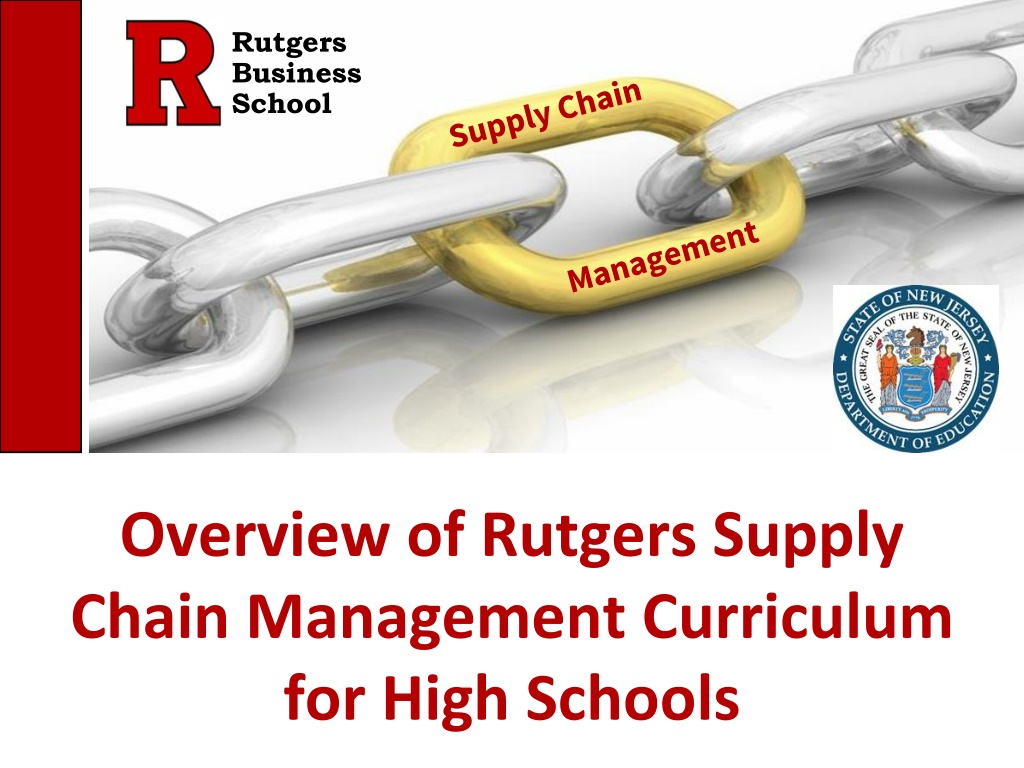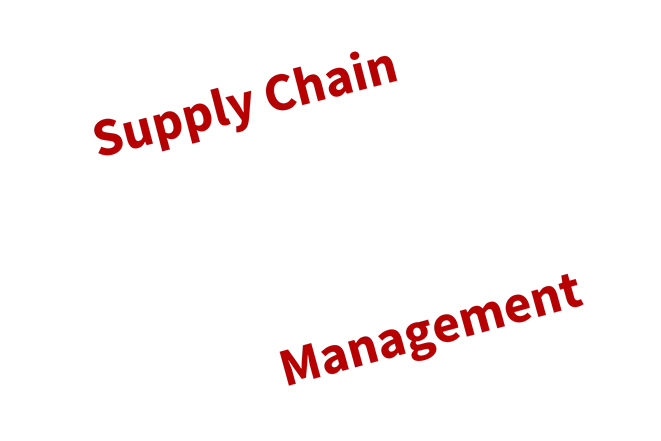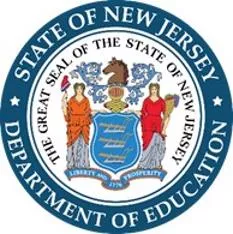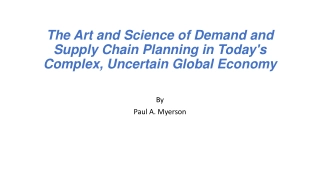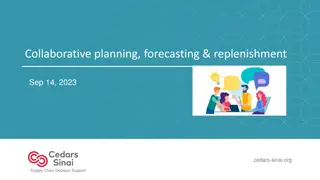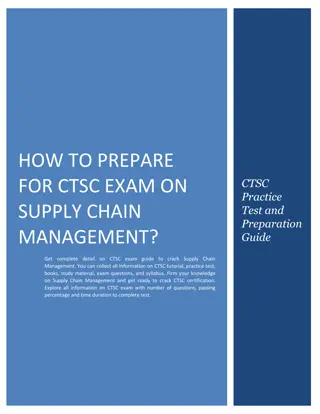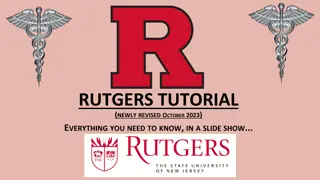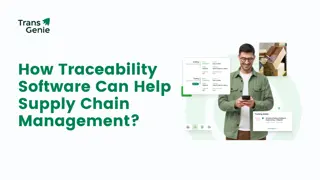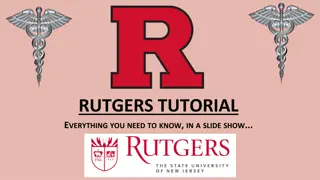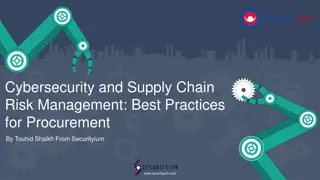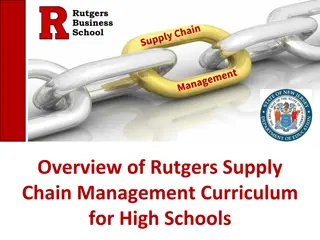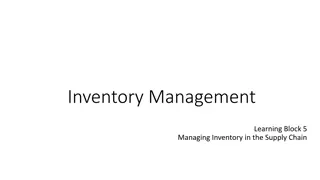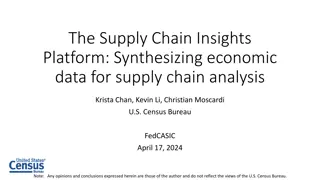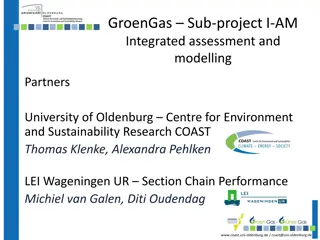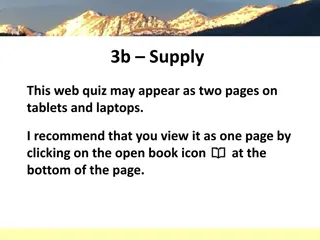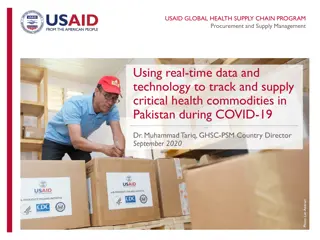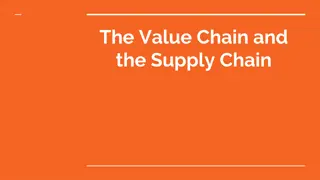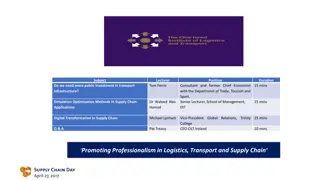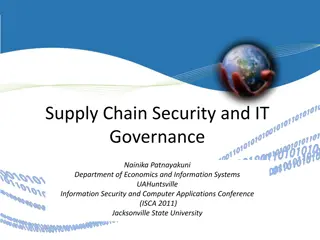Rutgers Supply Chain Management Curriculum Overview
Discover the comprehensive Supply Chain Management curriculum offered by Rutgers Business School, focusing on project-based learning and innovative teaching methods. Explore essential elements of project design, textbook foundation, and detailed course outlines for high school students interested in SCM.
Download Presentation

Please find below an Image/Link to download the presentation.
The content on the website is provided AS IS for your information and personal use only. It may not be sold, licensed, or shared on other websites without obtaining consent from the author.If you encounter any issues during the download, it is possible that the publisher has removed the file from their server.
You are allowed to download the files provided on this website for personal or commercial use, subject to the condition that they are used lawfully. All files are the property of their respective owners.
The content on the website is provided AS IS for your information and personal use only. It may not be sold, licensed, or shared on other websites without obtaining consent from the author.
E N D
Presentation Transcript
Rutgers Business School Overview of Rutgers Supply Chain Management Curriculum for High Schools
Rutgers Business School Project Based Learning The curriculum s approach is that of Project-Based-Learning (PBL) and is modeled after the eight Essential Elements of Project Design developed by the Buck Institute for Education
Essential Elements of Project Based Learning 1. Focus on Significant Content Target concepts & skills necessary for a student s future career in SCM. 2. Develop 21st Century Skills NJ Career Ready Practices are laced throughout the curriculum. 3. Engage Students in In-Depth Inquiry Require in-depth research to address the driving question. 4. Organize Tasks Around a Driving Question The driving question is written in terms relatable to the students. 5. Establish a Need To Know Engaging activities and relevant selected readings lead to critical and creative thinking about the driving question, but are not meant to provide the solution. 6. Encourage Voice and Choice Teachers guide students through the projects, allowing them to make choices about what to research and how to work toward a solution. 7. Include a Public Audience Subject matter experts serve as an authentic audience for presentations. 8. Incorporate Revision and Reflection Students incorporate feedback and then discuss what they learned. 3
New Supply Chain Management Curriculum The new Supply Chain Management Curriculum is based on the textbook for the Introduction to Supply Chain Management course at Rutgers Business School. Fundamentals of Supply Chain Management A Practitioners Perspective W. McLaury and E. Spiegle (ISBN 978-1-5249-0239-1) Available in Print and e-Book versions The book follows the Model 4
Plan, Source, Make, and Deliver Model Each trading partner has to PLAN, SOURCE, MAKE, and DELIVER their part of the supply in order to satisfy the underlying demand for the product or service. If you are a Manufacturer, you are also a Customer to your Suppliers, and a Supplier to your Customers Supply Chain Management facilitates that process The Textbook and the new Curriculum are based on this model 35
Curriculum Outline There are three (3) courses which can be taught as either yearlong courses or one course per semester in a block schedule. Course #1 Basic Concepts (8 Projects available) Course #2 Intermediate Concepts (8 projects available) Course #3 Advanced Concepts (10 projects available) Course #3 includes optional content which can be used to expand into a 4thcourse if desired Each Course includes Required and Elective Projects All Courses will follow the Model We anticipate adding more projects in each course over time. 6
Course Outline (continued) Selected relevant readings from the textbook and other sources. Includes video s and hands-on exercises where available. Projects to be presented to an authentic audience by each Student team. Students maintain a Professional Journal End-of-Project Assessments * End-of-Course Assessment * End-of-Program Assessment * * Opportunity to conduct assessments through an on-line platform 7
Course #1 Basic Concepts Presentation: Introduction to Supply Chain Management (Recommended) 8
Project Outline 1. 2. 3. 4. 5. 6. 7. 8. 9. 10. Develop Solution(s) 11. Presentation to Authentic Audience 12. Revisions Based on Feedback 13. Final Deliverable 14. End-of-project Assessment 15. Round-table Discussion Introduction Driving Question Project Description and Problem Statement Engaging Activity Team Organization Relevant Readings and Videos Key Vocabulary Preparatory Math Exercise (if applicable) Conduct Authentic Research 12
Manufacturer Suppliers Customers Raw Material Suppliers Finished Material Suppliers Finished Product Manufacturer Wholesaler & Distributor Customers Intermediate Suppliers Retail Customers Consumers Project 1.1 Supply Chain Flow Project 1.3 Manufacturing Strategy Decision Project 1.5 Supply Chain Disruption Project 1.2 Project 1.4 Strategic Sourcing and Supplier Selection Project 1.6 Supplier Relationship Management Transportation Mode Selection Project 1.8 Warehouse Design Project 1.7 Manufacturing Process Decision Project 2.1 Material Planning Project 2.2 Project 2.3 LEAN Manufacturing Project 2.5 Inventory Management Project 2.7 Six Sigma Project 2.4 Insourcing -vs- Outsourcing Decision Warehouse Network and Location Project 2.6 Project 2.8 Competitive Bidding Process & Negotiation Transportation Freight Loading Project 3.2 Ethical Sourcing Project 3.6 Importing Project 3.1 Project 3.4 Production & Capacity Planning Project 3.3 Sustainability Logistics Intermediaries Project 3.5 Sales & Operations Planning Project 3.7 Collaborative Planning, Forecasting, & Replenishment Project 3.9 Reverse Logistics RBS SCM Curriculum Project 3.8 Course #1 Basic Concepts Course #2 Intermediate Concepts Course #3 Advanced Concepts Supply Chain Optimization Project 3.10 Service Supply Chain
Example Project: Course 1: Basic Concepts Project 1.2: Strategic Sourcing and Supplier Selection DELIVER (Return) MAKE PLAN SOURCE 14
